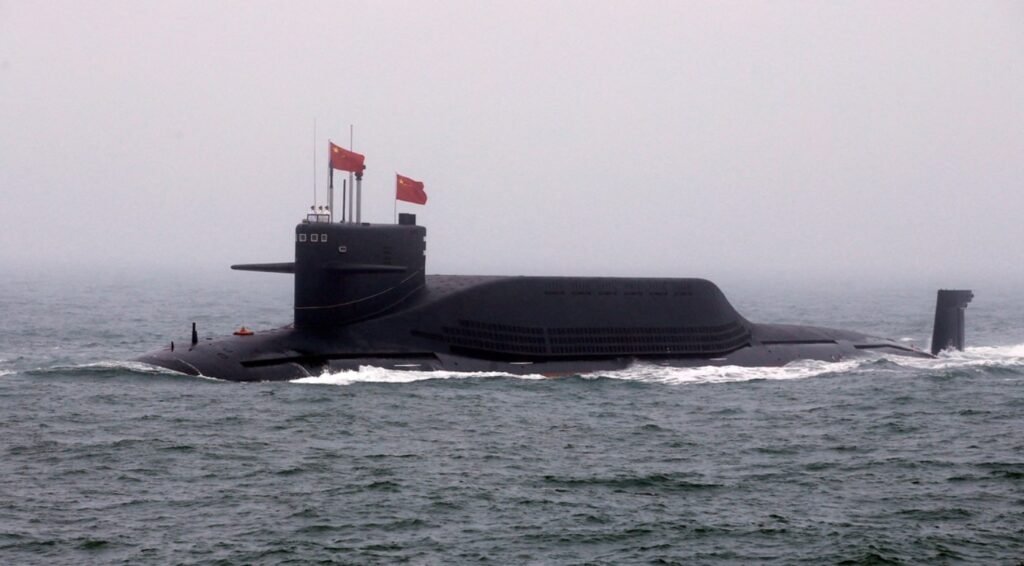China is developing a new generation of nuclear-armed submarines that could pose a serious threat to the U.S. and its allies in the Indo-Pacific region, according to a recent report by the U.S. Naval War College.
China’s Type 096 Submarines: A Nightmare for the U.S. Navy
The report, based on Chinese military journals, speeches, patents and satellite imagery, predicts that China’s Type 096 ballistic missile submarines (SSBNs) will be operational by 2030 and will have significant advantages over the current Type 094 SSBNs in terms of stealth, sensors and weapons.

The Type 096 submarines will carry China’s most advanced submarine-launched JL-3 missiles, which have a range of more than 9,000 kilometers and can reach most of the continental U.S. from the South China Sea. The Type 096 submarines will also use pump-jet propulsion and internal quieting devices, which will make them much harder to detect by the U.S. and allied anti-submarine warfare (ASW) forces.
“The Type 096s are going to be a nightmare,” said retired submariner and naval technical intelligence analyst Christopher Carlson, one of the researchers. “They are going to be very, very hard to detect.”
China’s Nuclear Deterrence Patrols: A Challenge to the U.S. and Allies
The report also reveals that China is routinely staging fully armed nuclear deterrence patrols with its older Type 094 SSBNs out of Hainan Island in the South China Sea, much like patrols operated for years by the U.S., Britain, Russia and France.
These patrols are intended to demonstrate China’s ability to launch a second-strike nuclear retaliation in case of an attack by the U.S. or its allies. However, the Type 094 SSBNs are considered relatively noisy and vulnerable to ASW operations by the U.S. and its allies, especially in the shallow waters of the South China Sea.
The report notes that the Type 096 submarines will compare to state-of-the-art Russian submarines in terms of stealth, sensors and weapons. It said that jump in capabilities would have “profound” implications for the U.S. and its Indo-Pacific allies.
China’s Submarine Development: A Long and Difficult Journey
The report also charts more than 50 years of China’s submarine development, which has been often hampered by technical difficulties, political turmoil and foreign sanctions. China’s first-generation SSBNs, the Type 092 Xia class, were plagued by noise, reliability and safety issues and never conducted a deterrence patrol.
China’s second-generation SSBNs, the Type 094 Jin class, were an improvement but still lagged behind their Western and Russian counterparts in terms of stealth and performance. China’s third-generation SSBNs, the Type 096 Tang class, are expected to be a major leap forward for China’s naval nuclear forces.
The report also suggests that China has benefited from “imitative innovation” of Russian technology, especially in the areas of pump-jet propulsion and internal quieting devices. China has also invested heavily in building new shipyards, such as the Huludao facility, where satellite imagery shows pressure hull sections for a large submarine being worked up.
The Implications of China’s Submarine Arms Race: A Need for Cooperation and Dialogue
The report concludes that China’s submarine arms race with the U.S. and its allies will have significant implications for regional security and stability. It warns that the increased deployment of SSBNs by both sides could increase the risk of accidents, miscalculations and escalation in a crisis.
The report also calls for more cooperation and dialogue between China and the U.S. on submarine safety, communication and confidence-building measures. It suggests that both sides could learn from the experience of Cold War-era agreements between the U.S. and the Soviet Union on submarine incidents at sea (INCSEA) and prevention of nuclear war (PNW).
The report also urges the U.S. and its allies to enhance their ASW capabilities and coordination in response to China’s growing submarine threat. It recommends that the U.S. should maintain a credible nuclear deterrent posture in the Indo-Pacific region and pursue arms control initiatives with China.
